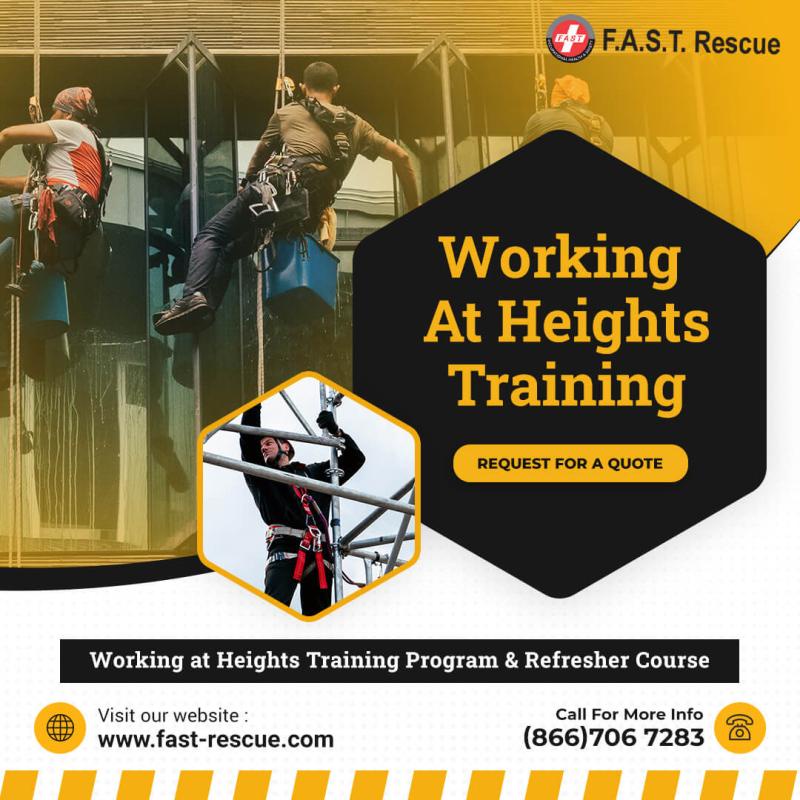Introduction:
Working at heights is a critical aspect of numerous industries, from construction and maintenance to telecommunications and window cleaning. While the tasks undertaken at elevated positions are essential, they come with inherent risks that demand careful attention and preparation. In this comprehensive blog, we will delve into the world of working at heights, exploring essential safety guidelines, equipment, risk assessments, and training to help professionals rise confidently and securely in their respective roles.
Section 1: Understanding the Risks and Importance of Safety
- The significance of height safety in the workplace.
- Statistics and common accidents related to working at heights.
- Legal and regulatory obligations to ensure a safe work environment.
- Employers' responsibilities and fostering a safety culture.
Section 2: Essential Equipment for Fall Protection
- Harnesses, lanyards, and anchor points: Proper usage and maintenance.
- Exploring different types of fall protection systems.
- The role of personal protective equipment (PPE) in height safety.
- Factors to consider when selecting height safety equipment.
Section 3: Identifying and Mitigating Hazards
- Comprehensive risk assessments and hazard identification.
- Understanding environmental factors that impact height safety.
- Preventing slips, trips, and falls at elevated locations.
- Creating effective control measures for common hazards.
Section 4: Ladder Safety: Scaling Heights Securely
- Safe usage and positioning of ladders in various scenarios.
- Different types of ladders and their appropriate applications.
- Inspecting and maintaining ladders for optimal safety.
- Ladder-related accidents: Causes and how to prevent them.
Section 5: Scaffolding Safety: Building Up with Confidence
- Scaffolding types, assembly, and stability considerations.
- Safe practices for working on scaffolds.
- Inspection and maintenance guidelines for scaffolding.
- Training requirements for scaffold users and supervisors.
Section 6: Aerial Lifts and Elevated Platforms
- Safe operation and best practices for aerial lifts.
- Assessing the suitability of aerial lifts for specific tasks.
- Operator training and certification for aerial lift usage.
- Preventing accidents and injuries when using elevated platforms.
Section 7: Emergency Response and Rescue Protocols
- Developing emergency action plans for heights-related incidents.
- Techniques for self-rescue and assisting others at heights.
- The importance of communication and coordination during rescues.
- Rescue equipment and specialized training for rescue teams.
Section 8: Height Safety Training: Empowering Professionals
- Benefits of formal training and certification in height safety.
- Customized training programs for specific industries and tasks.
- Evaluating the effectiveness of height safety training.
- Incorporating ongoing education and updates into safety practices.
Conclusion:
Mastering the art of working at heights demands a combination of knowledge, training, and vigilance. By understanding the risks involved, adopting the right safety measures, and investing in comprehensive training, professionals can confidently rise to new heights in their careers while prioritizing their well-being and the well-being of their team. Remember, safety should always remain the utmost priority when reaching for the sky.


No comments yet